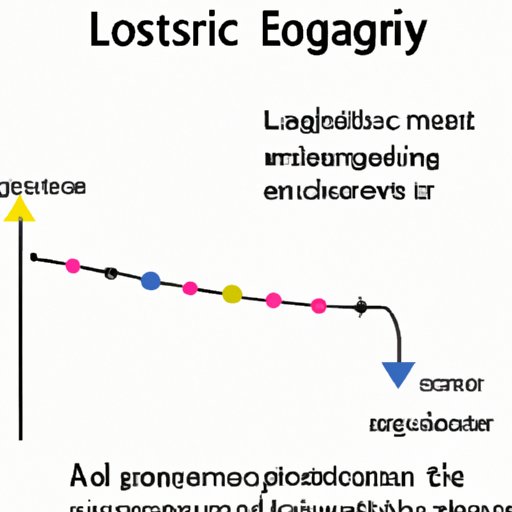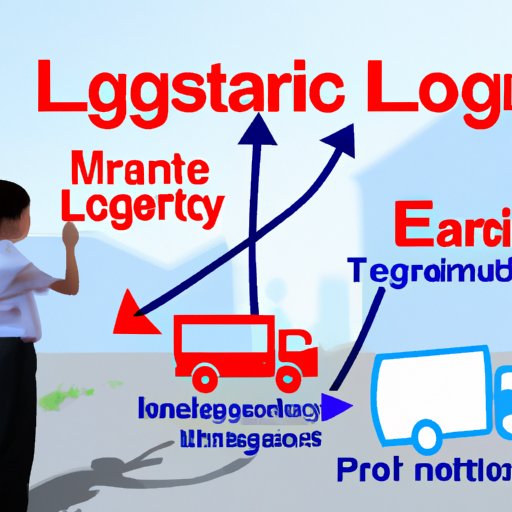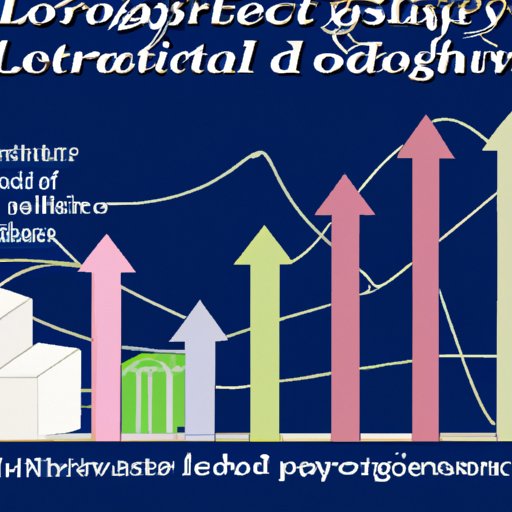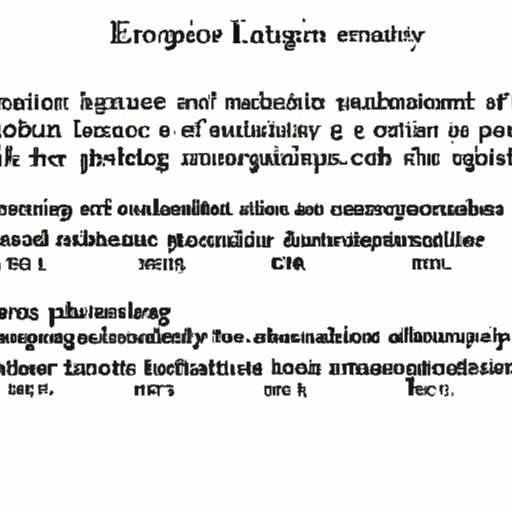Introduction
Logistic growth is a type of growth that occurs when the rate of increase slows down or levels off as the population reaches its carrying capacity. It is commonly used in mathematical models to describe population growth and is based on the idea that resources are limited and can only support a certain number of individuals. In this article, we will explore what logistic growth is in science, looking at the different components and characteristics, as well as its applications in scientific research and other fields.

Exploring the Basics of Logistic Growth in Science
Logistic growth is a type of growth curve that is characterized by slow or no growth at the beginning and end of the curve. It is often used to model population growth, as it takes into account the limited resources available for an organism to survive and reproduce. The logistic growth equation is given by:
dN/dt = rN(1 – N/K)
Where N is the size of the population, t is time, r is the growth rate, and K is the carrying capacity of the environment. This equation can be used to calculate the rate at which the population is growing over time.
In nature, logistic growth can be seen in many different organisms, from bacteria to plants and animals. For example, when a species is introduced to a new habitat, its population may initially grow quickly due to the abundance of resources available. However, as the population grows, the resources become more limited and the growth rate decreases until it eventually reaches a steady state.
Logistic growth is also characterized by its sigmoid shape, which is shaped like an S-curve. This shape is due to the fact that the growth rate slows down as the population approaches its carrying capacity. The graph below shows an example of a logistic growth curve.

A Comprehensive Guide to Understanding Logistic Growth
To understand logistic growth in greater detail, it is important to look at the mathematical equations and graphs used to represent it. The logistic growth equation, as mentioned previously, can be used to calculate the rate of population growth over time. This equation can be graphed to create a logistic growth curve, which is a visual representation of the population growth.
The graph of a logistic growth curve has three distinct phases. The first phase is called the lag phase, which is characterized by slow or no growth. This is followed by the exponential growth phase, which is characterized by rapid growth as the population increases. Finally, the carrying capacity is reached and the growth rate begins to slow down until it reaches a steady state.
It is also important to consider the factors that influence logistic growth. Some of these include the availability of resources, competition between individuals, predation, and environmental conditions. All of these factors play a role in determining the rate at which a population grows and how it eventually reaches its carrying capacity.
How Does Logistic Growth Impact Scientific Research?
Logistic growth is an important concept in scientific research, as it can be used to model population changes over time. It is also used to study the spread of diseases, as it takes into account the limited resources available for an organism to survive and reproduce. By understanding logistic growth, researchers can better predict how a population will respond to changing environmental conditions and develop strategies to control the spread of disease.
In addition, logistic growth is used to study the impact of human activities on population dynamics. For example, researchers have used logistic growth models to study the effects of deforestation on animal populations. By understanding how human activities affect the growth of a population, researchers can identify conservation strategies to protect vulnerable species.

Examining Logistic Growth Through its Different Applications
Logistic growth is also used in economics to study the demand for products and services over time. Businesses use logistic growth models to forecast the future demand for their products and services, as well as to identify potential areas of growth. In addition, logistic growth is used in environmental studies to examine the impacts of climate change on species and ecosystems.
Logistic growth is also used to study the dynamics of ecosystems. By understanding how populations interact with one another and their environment, researchers can identify strategies to protect endangered species and maintain the health of the ecosystem.

Investigating the Dynamics of Logistic Growth
Logistic growth can be divided into two main types: linear and exponential. Linear logistic growth is characterized by a constant rate of increase, while exponential logistic growth is characterized by a rate of increase that accelerates over time. The difference between the two types of logistic growth can be seen in the graph below.

It is also important to consider the effects of exponential growth on logistic growth. Exponential growth occurs when the rate of increase is constantly accelerating. This can lead to a rapid increase in the population size, which can result in a decrease in resources and a decrease in the growth rate.
Analyzing the Effects of Logistic Growth on Ecosystems
Logistic growth can have a significant impact on ecosystems. As the population size increases, it can lead to a decrease in resources and a decrease in the diversity of species. This can lead to a decrease in biodiversity, as some species may become extinct due to a lack of resources or competition with other species.
Human activities can also have an impact on logistic growth. For example, deforestation can reduce the amount of resources available for an organism to survive and reproduce, resulting in a decrease in the population size. In addition, pollution can reduce the carrying capacity of the environment, leading to a decrease in the growth rate.
Conclusion
In conclusion, logistic growth is an important concept in science and is used to model population changes over time. It is characterized by its sigmoid shape and is influenced by factors such as the availability of resources, competition between individuals, and environmental conditions. Logistic growth is also used in economics and environmental studies, as well as to study the dynamics of ecosystems. Finally, human activities can have a significant impact on logistic growth, leading to a decrease in resources and a decrease in biodiversity.
Through this article, we have explored what logistic growth is in science and examined the different components and characteristics. We have also looked at its applications in scientific research and other fields, as well as the effects of exponential growth on logistic growth. Finally, we have discussed the impact of human activities on logistic growth and how it can affect ecosystems.
Final Thoughts
Logistic growth is an important concept in science and is used to model population changes over time. It is influenced by many different factors, including the availability of resources, competition between individuals, and environmental conditions. By understanding logistic growth, researchers can better predict how a population will respond to changing environmental conditions and develop strategies to protect vulnerable species.
(Note: Is this article not meeting your expectations? Do you have knowledge or insights to share? Unlock new opportunities and expand your reach by joining our authors team. Click Registration to join us and share your expertise with our readers.)
